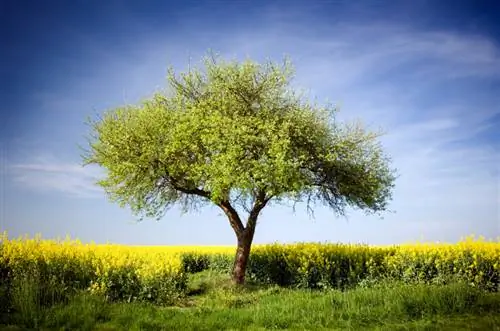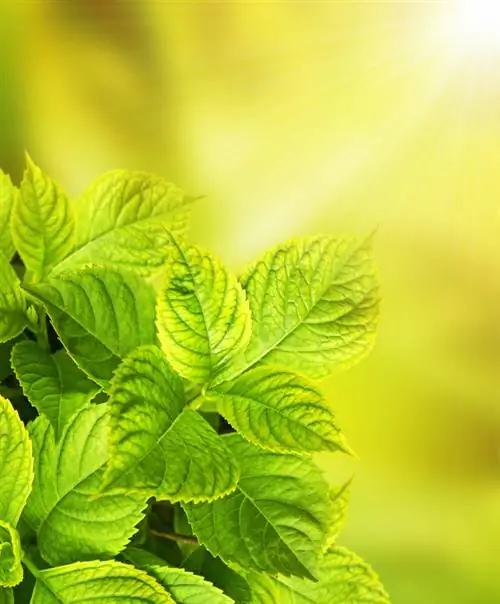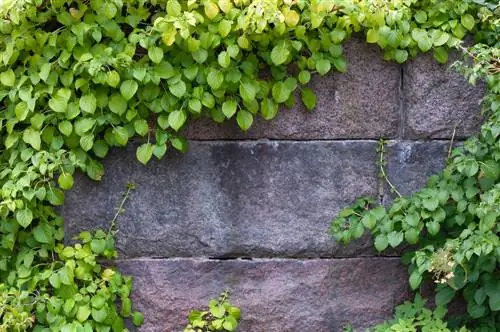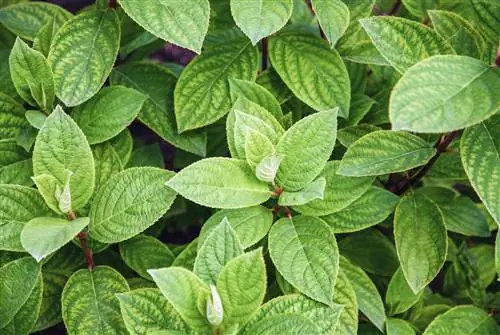- Author admin [email protected].
- Public 2023-12-16 16:46.
- Last modified 2025-01-23 11:20.
Farmer hydrangeas are popular flowering shrubs for cultivation in the garden and in containers. They are characterized by lush flowers in shades of pink, purple and, depending on the pH of the soil, blue. White flowering farm hydrangeas look very distinctive. However, if the plant does not want to bloom, perhaps even not even a bud is visible, care errors or overwinter damage are usually the cause.
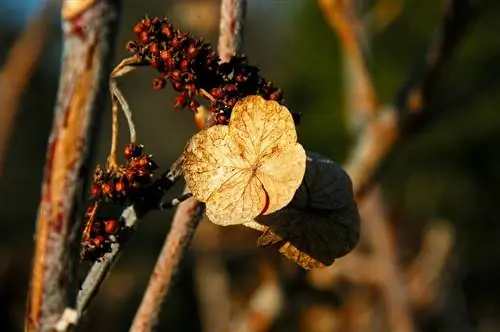
Why isn't my farmer's hydrangea blooming and how can I change this?
A country hydrangea isn't blooming? Possible causes include frost damage, incorrect pruning, care errors, gray mold infestation or incorrect soil. To encourage flowering, choose a sheltered location and fertilize regularly with a hydrangea fertilizer.
Frost damage can ruin flowers
Dry, stunted flower buds that stop developing are an indication of frost damage. Country hydrangeas always bloom on the previous year's wood and therefore develop the flower buds for the next year's bloom after the previous year's bloom. Even if the individual farmer's hydrangeas have good winter hardiness, these flower buds are at risk in winter and can freeze. You can remedy this by choosing a protected place (i.e. preferably in partial shade and without midday sun) for your hydrangeas or by overwintering them frost-free in a pot. Alternatively, you can also choose modern varieties that also bloom on annual wood. The “Endless Summer” variety is very suitable.
Do not cut back farm hydrangeas
Another cause of the lack of flowering is incorrect pruning, which may have been carried out in the spring. As a result, no buds are even formed because they were simply cut away. Be careful not to cut dead flower stems too deeply the previous fall. Farm hydrangeas should not be cut back in spring; only dead inflorescences should be removed.
Care errors lead to poor flowers
Furthermore, care errors and gray mold infestation caused by care errors lead to flower failure. Country hydrangeas need a lot of water and must never be allowed to dry out. However, waterlogging should definitely be avoided. You also need to ensure a regular supply of nutrients with a good hydrangea fertilizer, which should not contain a lot of nitrogen or phosphorus. Although these fertilizers encourage the plant to grow in size, they hinder its flowering. If the flower buds are covered with a gray coating and fall off, the farmer's hydrangea is probably affected by gray mold. The fungus often appears when the location is too humid or after a long period of rain. It is usually enough to cut off the affected buds and destroy them, although a flower will of course no longer occur afterwards. However, you can spray with a fungicide as a preventive measure.
Tips & Tricks
Lastly, the wrong soil can also be to blame for the lack of flowering. If the soil is too alkaline, you can improve it with leaf humus, mature compost and some peat.


